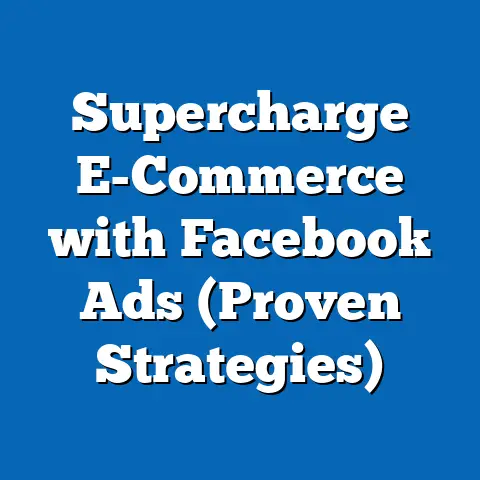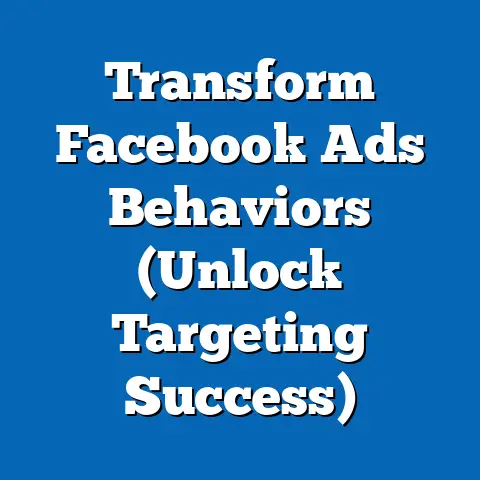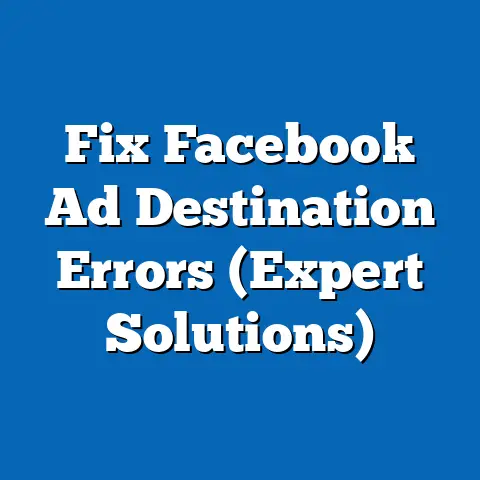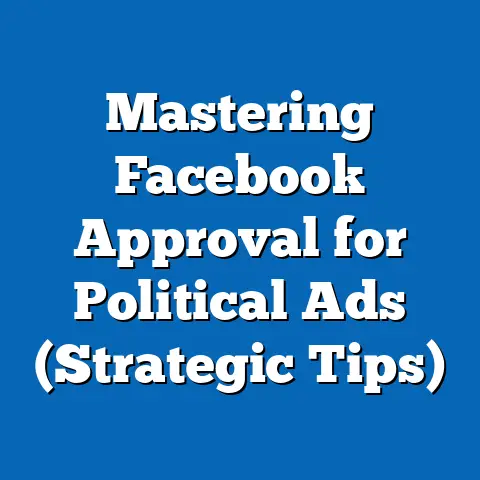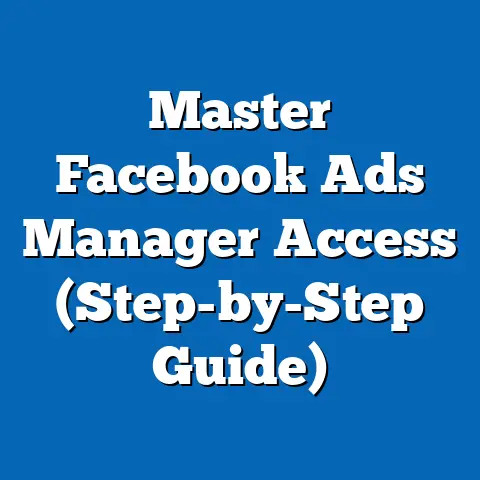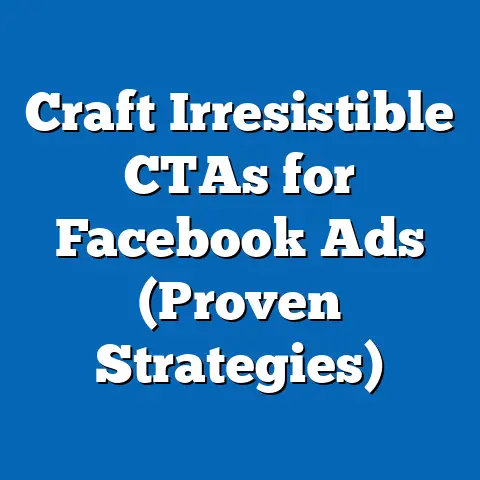Winning Facebook Game Ads (Proven Strategies Inside)
Ever been scrolling through Facebook and suddenly found yourself sucked into a game ad, promising untold riches and epic battles? I know I have! It’s almost embarrassing how easily I can get sidetracked by a well-crafted ad, especially when it comes to games. One time, I was supposed to be finalizing a marketing report, but ended up spending a solid hour building a virtual farm! The power of those ads is undeniable. They’re not just about selling a product; they’re about tapping into our desires for fun, challenge, and connection.
Facebook game ads, when done right, are more than just a means of promotion. They’re a bridge to connecting with gamers on a personal level, understanding their passions, and offering them experiences they crave. This article is your roadmap to creating those winning ads. We’re diving deep into the proven strategies that will help you craft Facebook game ads that not only grab attention but also convert casual scrollers into dedicated players. From understanding your audience and crafting compelling copy to eye-catching visuals and strategic targeting, we’ll cover it all. Get ready to level up your Facebook game ad strategy!
Section 1: Understanding Your Audience
Before you even think about crafting a single ad, you need to know who you’re talking to. Imagine trying to sell a hardcore strategy game to someone who only plays Candy Crush – it’s a recipe for wasted ad spend! Understanding your target audience is paramount in the gaming niche. It’s not enough to just say “gamers.” You need to drill down into the specifics.
Facebook gamers are a diverse bunch, spanning all ages, genders, and interests. While the stereotypical image might be a teenage boy in his basement, the reality is far more complex. According to recent data, the average age of a mobile gamer is around 36, and the gender split is surprisingly even. That means your audience could be anything from a busy mom looking for a casual puzzle game to unwind, to a retired professional seeking a challenging strategy title.
To truly understand your potential players, I highly recommend using Facebook Audience Insights. This often-overlooked tool is a goldmine of information. It allows you to gather data about potential players, including their demographics, interests, behaviors, and even their purchase history. You can see what other pages they like, what devices they use, and what kind of content they engage with. This data is invaluable for tailoring your ads to resonate with their specific needs and desires.
For example, let’s say you’re developing a medieval fantasy RPG. Using Audience Insights, you might discover that your target audience is primarily interested in history, mythology, and other fantasy franchises like “Game of Thrones” or “Lord of the Rings.” Armed with this knowledge, you can craft ads that specifically appeal to these interests, using imagery and messaging that resonates with their existing passions.
Another powerful technique is creating audience personas. These are fictional representations of your ideal players, based on the data you’ve gathered. Give them names, ages, occupations, and even backstories. What are their motivations? What are their pain points? What kind of games do they already play? By creating these personas, you’ll be able to better empathize with your target audience and create ads that speak directly to their needs and desires.
I remember working on a campaign for a mobile puzzle game aimed at older adults. Initially, we were focusing on generic “brain training” benefits. However, after conducting thorough audience research, we discovered that our target demographic was more interested in the social aspect of the game – connecting with friends and family. We shifted our messaging to emphasize the game’s social features, and saw a significant increase in engagement and downloads.
Key Takeaway: Understanding your audience is not a one-time task. It’s an ongoing process of research, analysis, and refinement. Use Facebook Audience Insights, create audience personas, and constantly monitor your ad performance to ensure you’re reaching the right people with the right message.
Section 2: Crafting Compelling Ad Copy
So, you know your audience inside and out. Now it’s time to write some ad copy that actually grabs their attention. In the fast-paced world of social media, you have mere seconds to make an impression. Your ad copy needs to be clear, concise, and compelling. It needs to instantly convey the excitement and potential of your game.
The headline is arguably the most important element of your ad copy. It’s the first thing people see, and it’s what determines whether they’ll keep reading or scroll on by. A catchy headline should be attention-grabbing, intriguing, and relevant to your target audience. It should spark curiosity and make them want to learn more.
Here are a few examples of great ad copy headlines for game ads:
- “Conquer the Realm! Join the Epic Battle Today!” (Creates a sense of urgency and excitement)
- “Unlock Exclusive Rewards! Level Up Your Gameplay Now!” (Appeals to the desire for progression and exclusivity)
- “Tired of Boring Games? Discover the Puzzle That’s Sweeping the Nation!” (Addresses a common pain point and offers a solution)
- “Can You Solve the Mystery? Put Your Detective Skills to the Test!” (Intrigue and challenge)
Beyond the headline, the body of your ad copy should provide more details about your game, highlighting its unique features and benefits. Focus on what makes your game stand out from the competition. What are its key mechanics? What kind of experience does it offer? What are players saying about it?
One of the most effective techniques for crafting compelling ad copy is storytelling. People are naturally drawn to stories, and they’re more likely to remember information that’s presented in a narrative format. Use your ad copy to tell a brief story about your game, showcasing its world, characters, and challenges. Make them feel like they’re already part of the adventure.
For example, instead of simply saying “Our game has stunning graphics,” you could say “Embark on a breathtaking journey through a vibrant world filled with mythical creatures and ancient secrets. Explore lush forests, treacherous mountains, and forgotten ruins as you uncover the truth behind a long-lost prophecy.”
I once worked on a campaign for an indie game with a unique art style. Instead of focusing on the gameplay mechanics, we told the story of the game’s creation, highlighting the passion and dedication of the developers. We shared behind-the-scenes glimpses of the art process and the challenges they faced in bringing their vision to life. This approach resonated with gamers who were looking for something different and authentic.
Key Takeaway: Compelling ad copy is all about understanding your audience, crafting a catchy headline, and telling a story that resonates with their emotions. Use clear, concise language, highlight your game’s unique features, and always include a clear call to action.
Section 3: Eye-Catching Visuals
In the visual-centric world of Facebook, your ad’s visuals are often the first (and sometimes only) thing people notice. A blurry screenshot or generic stock photo simply won’t cut it. You need visuals that grab attention, showcase your game’s best features, and entice people to click.
The type of visuals you use will depend on your game and your target audience. However, some general principles apply. First, quality matters. Use high-resolution images and videos that are well-lit, sharply focused, and visually appealing. Avoid anything that looks amateurish or poorly produced.
For images, consider showcasing your game’s most stunning graphics, iconic characters, or exciting gameplay moments. Use vibrant colors, dynamic compositions, and eye-catching special effects. If possible, include a human element, such as a character’s face or a group of players engaged in gameplay.
Short video clips are particularly effective for game ads. They allow you to demonstrate gameplay mechanics, highlight special features, and give potential players a taste of the action. Keep your videos short and sweet – ideally under 15 seconds. Focus on the most exciting and visually appealing aspects of your game.
According to recent statistics, ads with video content have significantly higher engagement rates than ads with static images. Video ads are more likely to capture attention, hold interest, and drive conversions. In fact, some studies have shown that video ads can increase click-through rates by as much as 300%.
When creating video ads, consider using captions or text overlays to convey key information, as many people watch videos on mute. Also, make sure your video is optimized for mobile viewing, as the majority of Facebook users access the platform on their smartphones.
I remember working on a campaign for a mobile racing game. Initially, we were using static images of the cars. However, when we switched to short video clips showcasing the game’s high-speed action and stunning graphics, we saw a dramatic increase in click-through rates and downloads. The video ads allowed potential players to experience the thrill of the game firsthand.
Key Takeaway: Eye-catching visuals are essential for Facebook game ads. Use high-quality images and videos that showcase your game’s best features. Keep your videos short and engaging, and optimize them for mobile viewing. Don’t underestimate the power of visual storytelling.
Section 4: Leveraging Facebook Ad Formats
Facebook offers a variety of ad formats, each with its own strengths and weaknesses. Choosing the right ad format can significantly impact the success of your campaign. For game promotions, some formats tend to perform particularly well.
Carousel Ads: These ads allow you to showcase multiple images or videos in a single ad unit. This is a great way to highlight different aspects of your game, such as multiple features, character designs, or user testimonials. Each image or video can have its own headline, description, and call to action, allowing you to tailor your message to different audience segments.
Slideshow Ads: These ads are similar to video ads, but they’re created using a series of static images. This is a cost-effective way to create visually appealing ads without the need for video production. Slideshow ads are particularly effective for showcasing before-and-after transformations, step-by-step processes, or product demonstrations.
Collection Ads: These ads are designed to drive sales of products or services. They feature a main image or video, along with a selection of related products that users can browse and purchase. This format is particularly well-suited for games that offer in-app purchases or virtual items.
One of my favorite examples of a successful Facebook ad campaign using carousel ads was for a popular MMORPG. They used the carousel format to showcase different character classes, each with its own unique abilities and playstyle. This allowed potential players to see which class resonated with them the most, and click through to learn more.
Another successful campaign used slideshow ads to demonstrate the evolution of a city-building game. They showed how players could start with a small village and gradually build it into a thriving metropolis. This gave potential players a sense of progression and accomplishment.
Key Takeaway: Experiment with different Facebook ad formats to see what works best for your game. Carousel ads are great for showcasing multiple features, slideshow ads are cost-effective for visual storytelling, and collection ads are ideal for driving in-app purchases.
Section 5: Targeting and Retargeting Strategies
You could have the most stunning visuals and compelling ad copy in the world, but if you’re showing it to the wrong people, it’s all for naught. Strategic targeting is crucial for Facebook ads, especially in the competitive gaming niche.
Facebook offers a variety of targeting options, allowing you to reach potential players based on their demographics, interests, behaviors, and connections. You can target people who are interested in specific genres of games, who have liked pages related to gaming, or who have previously purchased games on Facebook.
Custom Audiences allow you to upload your own data, such as email lists or website visitors, and target those specific people with your ads. This is a great way to reach existing players or potential players who have already shown an interest in your game.
Lookalike Audiences are one of the most powerful targeting tools on Facebook. They allow you to create an audience that is similar to your existing customers or website visitors. This is a great way to reach new potential players who are likely to be interested in your game.
Retargeting is the process of showing ads to people who have previously interacted with your ads or visited your game’s landing page. This is a highly effective way to recapture the interest of users who have already shown some level of engagement.
For example, you could retarget people who clicked on your ad but didn’t download your game, or people who visited your game’s website but didn’t create an account. You can even segment your retargeting audience based on their level of engagement, showing different ads to different groups of people.
I once worked on a campaign for a mobile strategy game. We created a retargeting campaign that showed different ads to people who had completed different levels of the game. We offered rewards for completing higher levels, and saw a significant increase in player retention.
Key Takeaway: Strategic targeting is essential for Facebook ads. Use Custom Audiences and Lookalike Audiences to reach potential players who are more likely to engage with your game. Don’t forget to retarget users who have already shown an interest in your game.
Section 6: Analyzing and Optimizing Campaign Performance
Your Facebook ad campaign is live and running – congratulations! But the work doesn’t stop there. In fact, it’s just beginning. The key to long-term success is to continuously track your ad performance, analyze the data, and make informed decisions for future campaigns.
Facebook Ads Manager is your go-to tool for tracking ad performance. It provides a wealth of data on key metrics such as impressions, clicks, click-through rates (CTR), conversion rates, and cost per acquisition (CPA).
CTR measures the percentage of people who click on your ad after seeing it. A high CTR indicates that your ad is relevant and engaging to your target audience.
Conversion Rate measures the percentage of people who take a desired action after clicking on your ad, such as downloading your game or making an in-app purchase. A high conversion rate indicates that your ad is effectively driving results.
CPA measures the cost of acquiring a new customer. A low CPA indicates that your ad is cost-effective.
By monitoring these metrics, you can identify areas where your ad is performing well and areas where it needs improvement. For example, if your CTR is low, you may need to revise your ad copy or visuals. If your conversion rate is low, you may need to improve your game’s landing page or onboarding process.
A/B testing is a powerful technique for optimizing your ad campaigns. It involves creating multiple variations of your ad and testing them against each other to see which performs best. You can test different headlines, images, ad copy, targeting options, and even ad formats.
I always recommend starting with a clear hypothesis. What do you think will improve your ad performance? Then, create two versions of your ad, one with the change you’re testing and one without. Run both ads simultaneously and track the results. The ad that performs best is the winner.
I remember working on a campaign for a puzzle game. We were testing two different headlines: “Solve the Puzzle!” and “Brain Training Fun!” To our surprise, “Brain Training Fun!” significantly outperformed “Solve the Puzzle!” This simple change resulted in a dramatic increase in click-through rates and downloads.
Key Takeaway: Tracking ad performance, analyzing data, and making informed decisions is crucial for long-term success. Use Facebook Ads Manager to monitor key metrics, conduct A/B testing to optimize your ads, and always be willing to experiment.
Conclusion
Crafting winning Facebook game ads is a blend of art and science. It requires creativity, audience understanding, and a data-driven approach. By understanding your audience, crafting compelling copy, using eye-catching visuals, leveraging Facebook ad formats, implementing strategic targeting, and continuously analyzing and optimizing your campaigns, you can create ads that not only grab attention but also convert casual scrollers into dedicated players.
Remember, the gaming world is constantly evolving, so it’s important to stay up-to-date with the latest trends and best practices. Experiment with new ad formats, targeting options, and creative approaches. And most importantly, have fun!
So, go forth and conquer the world of Facebook game ads! Just try not to get too addicted to your own games in the process. After all, someone’s got to run those campaigns, right? Now, if you’ll excuse me, I think my virtual farm needs some tending…

